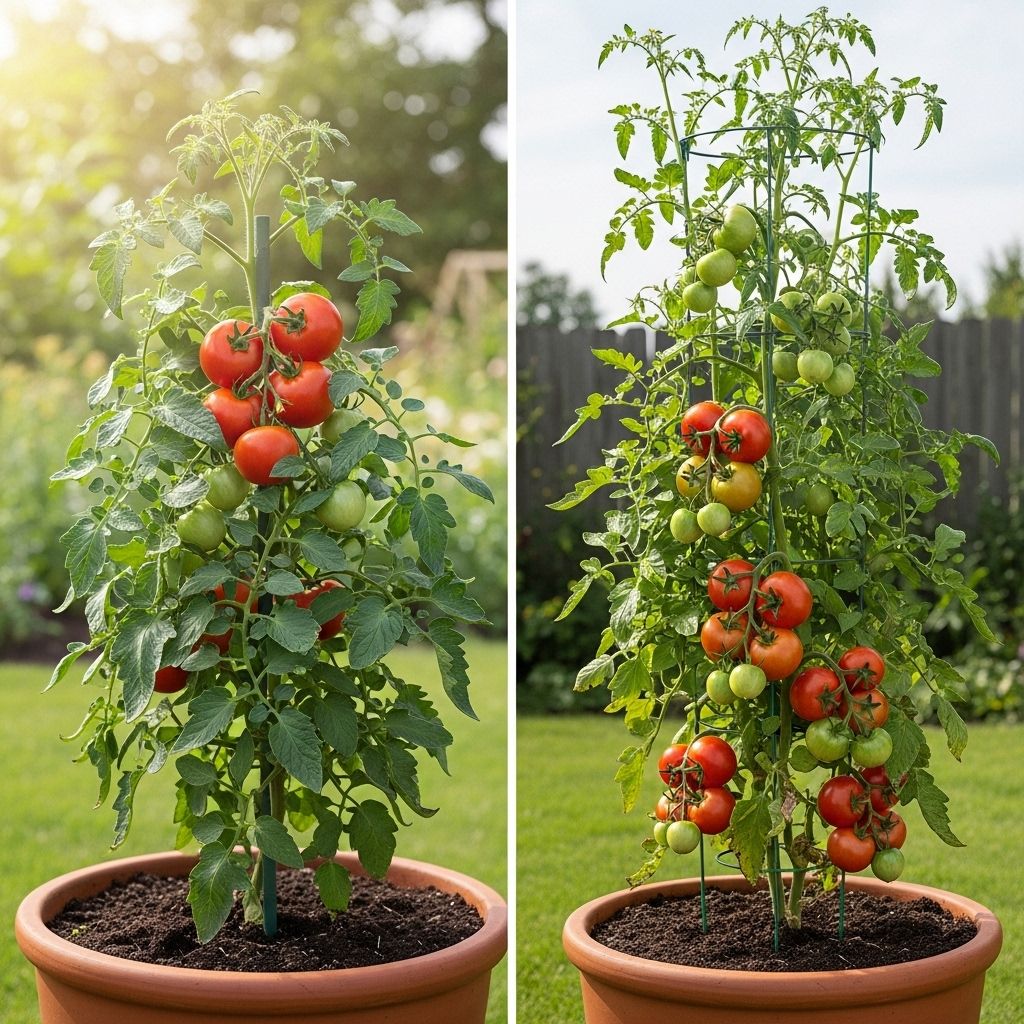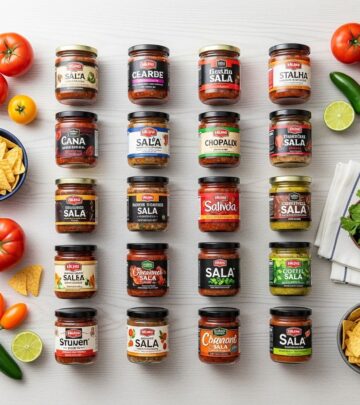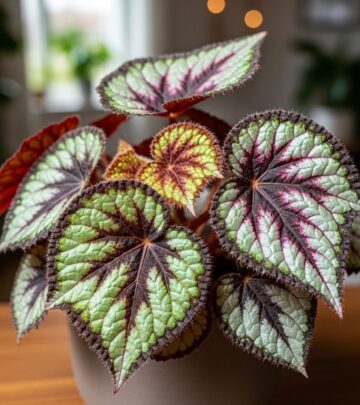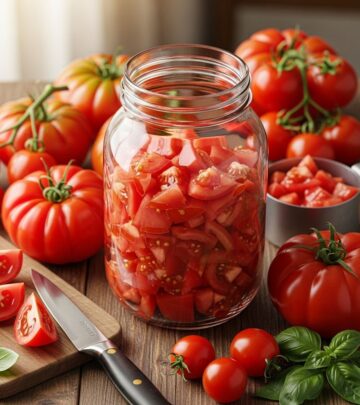Difference Between Determinate And Indeterminate Tomatoes Guide
Unravel the differences between determinate and indeterminate tomatoes to grow the best harvest for your space, taste, and goals.

Image: HearthJunction Design Team
Determinate vs Indeterminate Tomatoes: What’s the Difference?
When browsing tomato varieties for your home garden, you’ll quickly encounter two essential terms: determinate and indeterminate. While these labels might seem like technical jargon at first, they directly affect how your tomato plants grow, when you’ll harvest, and the overall care you need to provide. Understanding the distinctions between determinate and indeterminate tomatoes is key to planning a productive, enjoyable growing season.
Contents
- Understanding Tomato Growth Habits
- Fruit Set: How and When Tomatoes Produce
- Staking, Trellising, and Pruning Needs
- Best Tomatoes for Containers and Small Spaces
- Choosing Tomatoes for Your Harvest Goals
- How to Identify Determinate and Indeterminate Tomatoes
- Comparison Table: Determinate vs Indeterminate
- Frequently Asked Questions (FAQs)
Understanding Tomato Growth Habits
The core difference between determinate and indeterminate tomatoes is their growth habit, which sets the stage for differences in care, harvest timing, and practical use:
- Determinate tomatoes, also called “bush” tomatoes, grow to a specific, genetically-determined height (usually three to five feet) and then stop. These plants are compact, making them ideal for small gardens or containers. Their branches often appear dense, with flower clusters forming at the ends.
- Indeterminate tomatoes, sometimes called “vining” tomatoes, continue growing and producing foliage, flowers, and fruit throughout the season. These plants can reach heights of 6–10 feet or more, often sprawling or climbing with proper support. The vines keep growing until killed off by frost or disease.
Bush vs. Vine: What Does It Mean For Your Garden?
Determinate varieties offer a controlled, manageable structure, which is a boon for gardeners with limited space or those who prefer a tidy look. Indeterminate types, on the other hand, provide continuous vertical (or sprawling) growth, needing ample space and support, but rewarding you with a longer harvest window.
Fruit Set: How and When Tomatoes Produce
The growth pattern of your tomato plant directly affects when and how much fruit it produces:
- Determinate tomatoes set and ripen most of their fruit at once, usually over a window of just a few weeks. After this concentrated harvest, production drops off significantly.
- Indeterminate tomatoes develop flowers and fruit as they grow, delivering a steady trickle of ripened tomatoes throughout the season until frost or plant decline halts growth.
If your goal is a single, bountiful harvest for preserving, canning, or batch cooking, determinates are the classic choice. If you love snacking on fresh tomatoes, making weekly salads, or want an endless supply through summer, indeterminates shine.
Staking, Trellising, and Pruning Needs
Tomato plants, regardless of type, benefit from support. But the extent of this support varies:
- Determinate tomatoes are more self-supporting due to their compact size. Many bush varieties can stand with minimal staking—some container varieties don’t require any trellis. For larger or heavily fruited determinate plants, a small cage or single stake suffices.
- Indeterminate tomatoes demand robust support. Their vigorous vines become heavy and unruly, especially under a load of fruit. Tall cages, sturdy stakes, or elaborate trellis systems are a must to keep the growth off the ground and prevent disease. Pruning suckers (the shoots that develop in the leaf axils) can also help manage the plant’s size and improve airflow.
Best Tomatoes for Containers and Small Spaces
Space constraints are common for urban gardeners and those working with patios or balconies. Here’s how each type fares:
- Determinate tomatoes are the top pick for containers and compact gardens. Their modest height and bushy growth fit perfectly in pots, window boxes, or raised beds.
- Indeterminate tomatoes can still be grown in containers but require very large pots (at least 5 gallons, preferably larger) and strong vertical support. Their vigorous growth is better suited for open ground or spacious raised beds.
When planting tomatoes in containers, remember that all types need frequent watering and fertilization due to limited soil volume.
Choosing Tomatoes for Your Harvest Goals
Your intended use for the harvest will guide you to the right tomato growth habit:
- For preserving, canning, or making sauce: Determinate varieties deliver a large, concentrated crop, making it easy to gather enough fruit in one go for processing.
- For fresh eating, salads, and snacking: Indeterminate varieties spread their bounty across the entire season. You’ll never be overwhelmed by a glut, but you’ll always have a handful ready for picking.
Many gardeners choose to grow both types: determinates for bulk harvest and preserving, indeterminates for continuous fresh eating through the summer.
How to Identify Determinate and Indeterminate Tomatoes
If your seed packet, plant label, or catalog doesn’t specify whether a tomato is determinate or indeterminate, here’s how to figure it out:
- Growth description: If the plant is described as a “bush” or noted for containers/small spaces, it’s likely determinate. If it’s called “vining” or expected to grow very tall (over 6 feet), it’s almost certainly indeterminate.
- Heirloom status: Most heirloom tomatoes are indeterminate, with a few exceptions. Hybrid and modern varieties might be either.
- Observation: On a mature plant, determinate varieties usually have flower clusters at the ends of stems. Indeterminates keep growing new shoots and leaves from the top as the season progresses.
When in doubt, search for your variety name online or consult a reputable seed supplier’s catalog for growth habit details.
Comparison Table: Determinate vs Indeterminate Tomatoes
| Feature | Determinate | Indeterminate |
|---|---|---|
| Growth Habit | Bushy, compact | Vining, sprawling |
| Typical Height | 3–5 feet | 6–10+ feet |
| Fruit Production | All at once (2–3 weeks) | Continual, through the season |
| Total Yield Per Plant | Around 10 lbs in short time | Similar or more total yield, spread out |
| Harvest Window | Short, single period | Long, from early summer to frost |
| Support Needed | Minimal, small stake/cage | Strong trellis, tall cage/stake |
| Best For | Containers, small gardens, canning | Large spaces, fresh eating, continual harvest |
Frequently Asked Questions (FAQs)
Q: What are the main advantages of determinate tomatoes?
A: Determinate tomatoes are prized for their compact growth, minimal support needs, and synchronized fruit ripening. This makes them ideal for small gardens, containers, and for those who want to harvest large amounts of tomatoes all at once for processing, canning, or batch cooking.
Q: Why choose indeterminate tomatoes?
A: Indeterminate tomatoes are perfect for gardeners who want a season-long supply of fresh tomatoes. They require more space and support, but provide continuous fruit set for salads, sandwiches, and snacking from early summer to frost.
Q: Can I grow determinate and indeterminate tomatoes in the same garden?
A: Yes! Many gardeners plant both types to enjoy the benefits of each: a big, early harvest from determinates, and a steady, ongoing supply from indeterminates.
Q: Do both types need pruning?
A: Pruning is less critical for determinate tomatoes; too much pruning can actually reduce yield. Indeterminate tomatoes benefit from strategic pruning to improve airflow, manage size, and encourage healthy fruit production.
Q: Which type has better flavor?
A: Flavor depends on the specific variety more than on growth habit. Many heirloom, flavorful varieties are indeterminate, but delicious determinate types also exist. Consider your climate, available space, and taste preferences when choosing.
Q: How do I know whether my plant is determinate or indeterminate if the label is missing?
A: Observe its growth. Bushy, compact plants that flower at the branch tips are likely determinate. Plants that keep growing taller with new foliage and flowers from the top are probably indeterminate.
Tips for Growing the Best Tomatoes—Whatever the Type
- Start with healthy seedlings: Whether starting from seed or buying transplants, choose vigorous, disease-free plants.
- Choose disease-resistant varieties: Many hybrid tomatoes offer resistance to common problems like blight and wilt.
- Give tomatoes plenty of sun: At least 6–8 hours daily yields the best growth and fruiting.
- Stake or cage early: Install support structures when planting, not after plants get too large.
- Water and mulch consistently: Even moisture and a layer of mulch prevent cracking and disease.
- Feed regularly: Tomatoes are heavy feeders. Use a balanced fertilizer or compost for best results.
Conclusion: Making the Right Tomato Choice for Your Garden
Understanding the distinctions between determinate and indeterminate tomatoes empowers you to tailor your tomato patch to your needs. Determinate tomatoes reward you with a quick, manageable harvest for preserving or small spaces, while indeterminate types promise continual, generous picking all season long. By mixing both in your garden, you can celebrate the diversity, taste, and abundance tomatoes bring—no matter the size or style of your space.
References
- https://www.azurefarmlife.com/farm-blog/determinate-vs-indeterminate-tomatoes
- https://bonnieplants.com/blogs/garden-fundamentals/learn-tomato-growing-terms
- https://www.epicgardening.com/indeterminate-determinate-tomatoes/
- https://www.youtube.com/watch?v=4dnGBJE6wmI
- https://www.gardeningknowhow.com/edible/vegetables/tomato/determinate-vs-indeterminate.htm
Read full bio of Srija Burman












